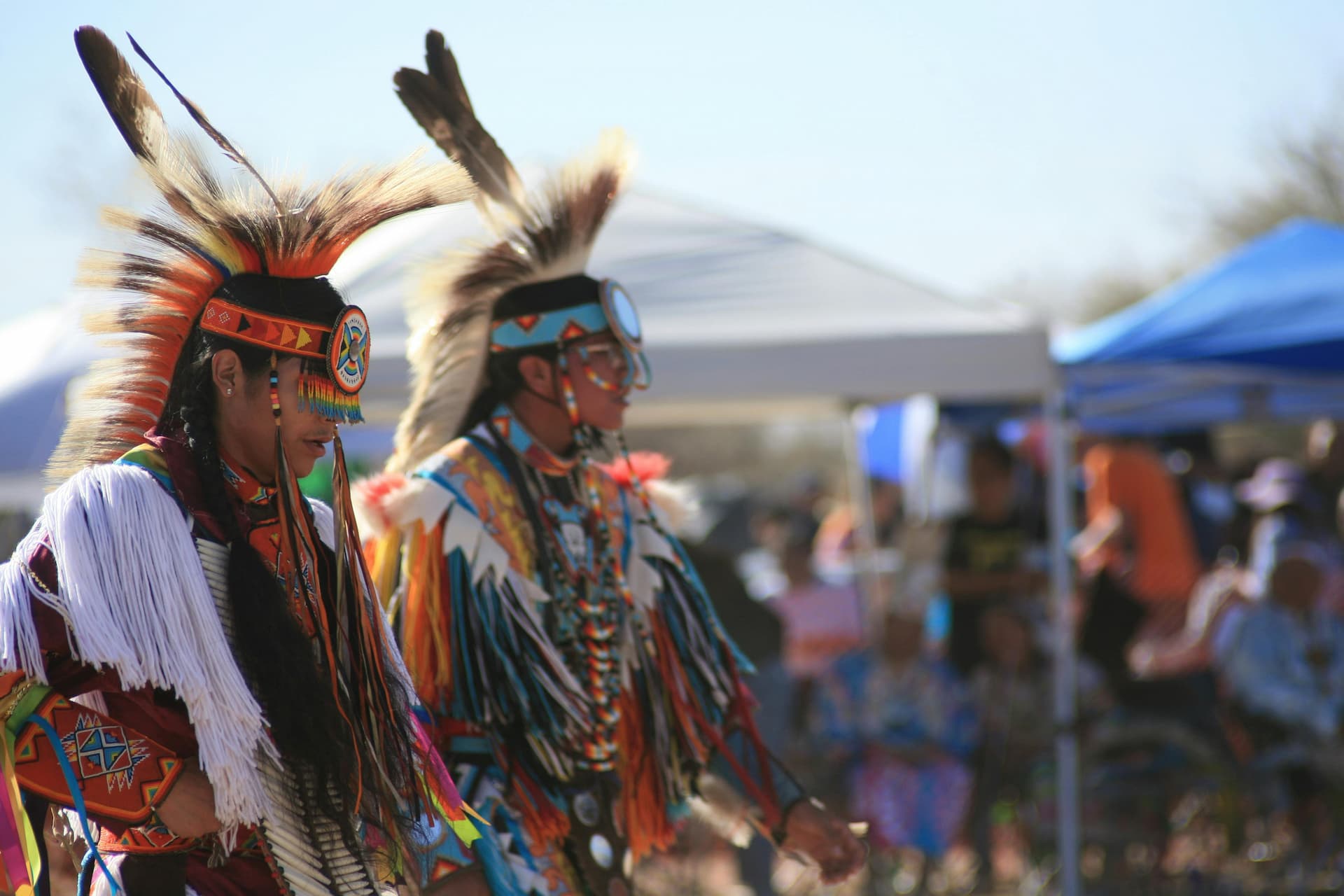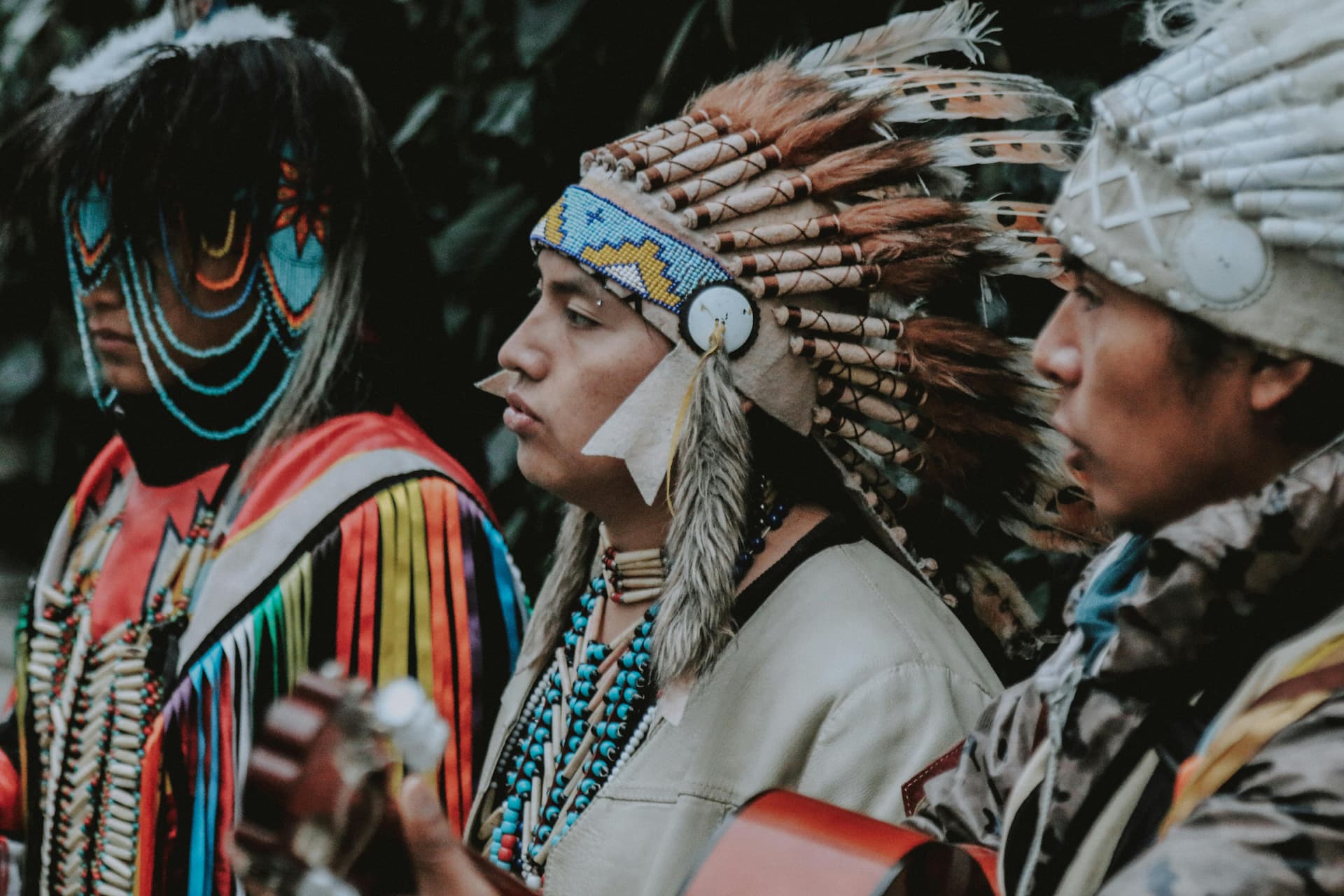The Richest Indian in the World

One way of getting to know and understand Indian people is through biography. However, too often Indian biographies focus on war leaders (almost always male) and on leaders from the nineteenth century. What is often lost is the twentieth century and common people. Jackson Barnett was one of those ordinary twentieth century Indians and it just happened that he became the richest Indian in the World. His story follows.
In 1830, the United States passed the Indian Removal Act which was intended to remove all Indians from the eastern portion of the United States and to relocate them on reservations west of the Mississippi River. Of particular concern to the Americans, was the removal of Indians from the Southern states. Tribes such as the Creek, Cherokee, Chickasaw, and Choctaw, who had assimilated much of American culture, would be required to leave the lands which they had been farming and improving for thousands of years, travel to what is now Oklahoma, and start over with unimproved lands.
President Andrew Jackson, one of the biggest advocates of removal, stressed that the removal plan had four major benefits for the Indians: (1) fixed and permanent boundaries outside of the existing American states and territories, (2) tribal self-government which was to be free from state interference, (3) the opportunity to become “civilized” — that is, to become Christian, to learn to covet private property, and to engage in European-American style agriculture, and (4) isolation from “corrupt” Americans.
In 1837, the Creek were placed in concentration camps in Alabama to await their removal to Oklahoma. Here they began the process of starting over, of continuing their cultural traditions in a new land. Among these cultural traditions was the organization of Creek society in towns or talwas.
Nearly 20 years after the Creek had been removed to Oklahoma, in 1856, Jackson Barnett was born. Since his mother belonged to the Tuckabatchee Town, Jackson also belonged to this town even though he never lived within the geographic Tuckabatchee town in the Creek nation. Like many other children during this era, his first language was Muskogee (one of the Creek languages) and he learned English as a child so that he became fully bilingual.
Like many other Creek Indians during this time, Jackson Barnett earned his living any way he could: he worked as a ferryman for his maternal half-brother; sometimes he worked as a cowboy; sometimes he worked as a bootlegger. While herding cattle, his leg became hung up in a strap on his horse and he sustained a head injury. One witness would later report that the injury left him in constant pain and that it took more than a year for him to recover. While we don’t really know how serious this injury was, in later times this head injury would be credited for making him “a little slow” and “not quite right in the head.”
In spite of his injuries and his mental capabilities, Jackson Barnett was able to support himself as an unskilled laborer for most of his life. Many described him as being an amiable and gentle man who enjoyed Creek communal society.
American promises to the tribes which were removed to Oklahoma did not last long. Following the Civil War, the pressure on the tribes to give up their land, their governments, their religions, and their traditional ways was intense. The American vision for the Indians required them to become Christian farmers. This meant that Indian should own their farms privately. The American goal was to destroy Indian tribalism and substitute individualism for it.
Indians in Oklahoma did not passively accept the American pressure to change. Among the Creek in 1897, a fundamentalist group known as the Snakes or Crazy Snakes under the leadership of Chitto Harjo advocated retaining common ownership of land and an independent government. In 1901, the American government put down the Snake Uprising by sending in the cavalry and jailing 100 traditionals, including Chitto Harjo.
In 1902, many of the traditionals involved with the Crazy Snakes once again gathered at the Hickory Ground (a traditional ceremonial area). The government responded by sending in marshals to arrest the leaders and cut off their long hair.
While Jackson Barnett was not among those arrested in any of the raids, he was involved with the Crazy Snakes. It is estimated that about 5,000 Creek were Crazy Snake sympathizers (about one-third of the Creek Nation). He was one of many Creek at this time who was neither Christian nor traditional, but was interested in continuing Creek culture.
Most of the Crazy Snakes, including Jackson Barnett, opposed the breaking up of Creek lands by refusing to take an allotment. In response, the government simply assigned them a parcel of land, usually good for growing rocks but little else. Thus Jackson Barnett received his 160-acre allotment. While this land was “private,” it was also restricted by the government. Indians, particularly full-bloods, were viewed as being incompetent and therefore the government was empowered to act as guardians on their behalf.
In addition to the federal government acting as a guardian for the Indian allottees, the Oklahoma courts also appointed guardians for all full-blooded Indians when valuable resources-such as oil or natural gas-were found on their allotments. The court-appointed guardians for these Indians collected large fees for their “services.”
In 1912, the Department of the Interior approved oil leases on Jackson Barnett’s 160-acre allotment. Six to eight wells were drilled and by 1913 his monthly royalty income was $14,000 to $15,000. As a ward of the government, this money was not paid to him, but was collected on his behalf by the Department of the Interior and deposited into his Individual Indian Money (IIM) account with the Treasury Department. Barnett was only allowed a few hundred dollars a year: the rest was managed for him by the Department of the Interior.
The policies of the Indian Department (later to become the Bureau of Indian Affairs) of the Department of the Interior emphasized the need for hard work. Not only did Indian agents discourage the use of labor-saving devices, they also viewed income from oil leases as unearned income and thus a corrupting influence on the Indians. To access the money in their IIM accounts, Indians had to show that they needed the money and that it wasn’t going to be spent on something which the agent felt was frivolous or labor-saving.
It did not take long for the world to discover that the World’s Richest Indian-as the press soon labeled Jackson Barnett-was only allowed to have a few hundred dollars on which to live. As his millions accumulated in the Treasury Department many people other than Jackson Barnett became interested in spending this money.
In 1919, the building committee from the First Baptist Church of Henryetta visited Jackson Barnett. While Barnett was not a church member (in fact, he does not appear to have been a Christian), the committee reported that he was receptive to their request. Barnett, who was illiterate, then signed papers authorizing $25,000 for the church building fund. The Bureau of Indian Affairs, endorsed the request as a good use of his money. The success in getting the $25,000 donation fueled the ambitions of other church groups in obtaining even more of his money.
The Commissioner of Indians Affairs at this time, Cato Sells, was a Baptist who worked with church groups to obtain donations from Indians with oil wealth. Such gifts were always sanctioned by the Indian Bureau even when they benefited non-Indians.
In 1920, Jackson Barnett put his thumbprint on a document which gave away nearly $1.5 million to charity. The deal, wholeheartedly approved by the Commissioner of Indian Affairs, included $1 million to the Indian hospital in Henryetta; $200,000 for the missionary, educational, and benevolent fund of the Southern Baptist Convention; $50,000 for the Oklahoma City Children’s Home Finding and Welfare League; $50,000 for the Murrow Orphans home at Bacone College; and $25,000 each to several Oklahoma churches. However, the Treasury Department reported that Barnett had only $1.1 million on deposit. In addition, a suit was filed by Barnett’s Oklahoma guardian preventing the dispersion of the funds until the legality of the actions could be determined by the courts.
There was at this time another interesting twist in the rush to help Jackson Barnett spend his millions: Anna Lowe, a 39-year-old non-Indian who is generally described as a “gold digger,” set her sights on marrying him. She managed to seduce the 64-year-old Barnett and persuaded him to elope to Kansas with her. The marriage was opposed by both the Bureau of Indian Affairs (BIA) and the Baptist Church. However, they were in a bit of dilemma: if they argued that the marriage should be annulled because Barnett lacked mental competency, then they could cast doubts upon his competence in donating to the church. In spite of the objections, a Kansas court sustained the marriage.
Commissioner of Indian Affairs Cato Sells hired a private investigator to work with BIA inspector W. L. Bowie to look into the private life of Anna Lowe and to provide him his ammunition which could be used to get the marriage annulled. The resulting report-The Bowie Report-provided the reader with information showing that Anna was artful and designing. It covered her alleged activities as a prostitute and blackmailer across Oklahoma, Texas, Arkansas, Missouri, Iowa, and Kansas. The report detailed her pattern of forming liaisons with wealthy married men.
When harassed about his marriage, Jackson simply replied: “Indians get married like other people. Why don’t you let us alone?”
With the help of his new wife, Jackson Barnett managed to increase his monthly allowance from the government in order to support a more extravagant lifestyle. The couple moved to California and purchased a large home. It was not uncommon for Barnett to stand in the street and direct the tourist traffic past the house. This was simply one of the activities that gained him a reputation for being a little eccentric.
The BIA was not happy with Barnett spending his money on his wife rather than donating to the Church charities which they had selected for him. In 1926, Jackson Barnett was seized by U.S. Marshals and the Secret Service. His wife, Anna Lowe, told the press that her husband had been kidnapped in a gross abuse of power by the Justice Department.
Barnett was taken to Oklahoma. There he was released to the custody of his wife. However, federal agents again staged a daring daylight kidnapping on Muskogee’s principal street. Once again, the courts ordered that he be released into the custody of his wife.
In 1927, Oklahoma Judge John C. Knox struck down the government-established trust for Creek millionaire Jackson Barnett. The judge summarized the case: “Solicited and importuned for donations, to which he readily affixed his thumbprint for most anyone who asked it; kidnapped and married by an adventuress and annoyed by her attorneys and their allies, who enlisted the support of officials of the Government-and who were probably convinced of the justification of their subsequent action-he was finally induced to assent to part with Liberty bonds in the vast sum of $1,100,000.” The judge found that the rationale by the Department of the Interior in creating the trust for Barnett did not justify their redistribution of his money.
What followed was a long and loud legal struggle to obtain control of Jackson Barnett’s money. It was a struggle that involved the BIA (and its parent, the Department of the Interior), the state of Oklahoma, and the Baptist Church. The one who seemed least concerned was Jackson Barnett. He sat through numerous hearings both in the court and in Congress as people argued over his money and his competence to manage this money. Through it all he continued to be a gentle, amiable Creek man.
While Jackson Barnett continued to remain loyal to his wife, the BIA sought to have his marriage annulled. Finally, in 1934 they succeeded. A judge annulled the marriage in part because of Jackson Barnett’s incapacity to make sound choices and Anna Lowe’s bad character. All property acquired by Anna Lowe since the marriage was ordered returned to the Department of the Interior.
In 1934, shortly after his marriage was annulled, Jackson Barnett died in his sleep of heart disease. He was 78 years old. He was buried in the Hollywood Memorial Cemetery in a ceremony presided over by an Episcopalian minister. A request for a marble headstone for his grave was refused by the BIA.
With his death, the battle to control his estate continued. More than 800 people came forward to claim a portion of his estate. The court case, In the Matter of the Estate of Jackson Barnett, took five years to resolve and its findings filled 25 bound volumes. In deciding the case, the judge ignored Creek preference for matrilineality, and imposed his own notions of patrilineal inheritance. He also refused to consider the idea of intermarriage with blacks.
It is estimated that because of his marriage to Anna Lowe, Jackson Barnett may have spent 15% of his fortune (without this marriage, he would have had access to significantly less); 25% of his fortune was distributed among his heirs as determined by the court; 30% went to lawyers; and the remainder just sort of disappeared into assorted fees and costs.



